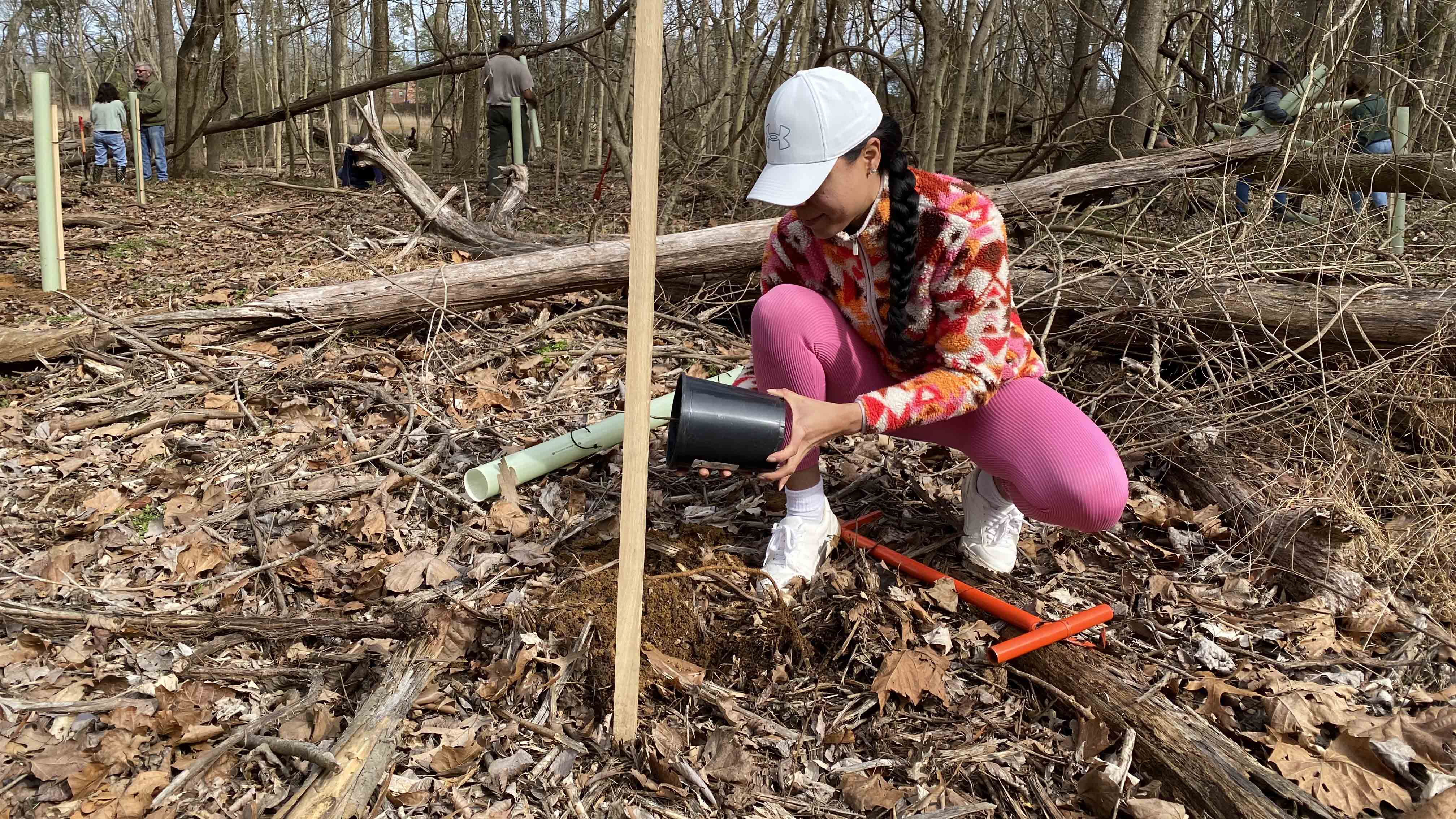
In a forested patch of land along the Nansemond River in Suffolk, dozens of tall wooden sticks jutted from the ground on Friday, marking spots where baby trees will soon be planted.
Right now the 18-acre patch is mostly open, cleared of invasive species that had taken over the site after years of industrial use.
But the Nansemond Indian Nation is working to restore this area to the native ecology that has been integral to the tribe for centuries.
Members of the tribe and a couple dozen local volunteers turned up Friday to start planting more than 450 trees.
“The tribe is kind of occupying that original stewards of the land role where they're really focused on remediating what was broken,” said Cameron Bruce, environmental program manager for the Nansemond Indian Nation. They’re “healing the environment alongside healing their culture.”
This week’s tree planting is part of a larger effort to restore and protect an ancestral village called Mattanock Town. The Chesapeake Bay Foundation and William & Mary’s Virginia Institute of Marine Science are partners on the project.
Early in the 20th century, a cement corporation built 11 mine spoil pits in the area, including the Mattanock Town site.
“What we're standing in currently is an old mine pit,” said Kati Grigsby, restoration coordinator with the Bay Foundation who wrote her VIMS master’s thesis on the project.
“When the mine operation stopped, most of the soil and most of the conditions of the property were subpar. It was just kind of a breeding ground for invasive species.”
The industry “fractured the connection between the upland forest, the high marsh, the low marsh, and the intertidal zones,” Grigsby wrote in her paper.
The mine operation was shut down by the EPA in the 1970s and the land went into city hands until about a decade ago, when Suffolk deeded 70-plus acres to the Nansemond Indian Nation.

Volunteers plant trees at the Mattanock Town site in Suffolk.
“It’s a significant site for us, but we also view it as a significant place to share our history and culture with our friends and neighbors in the area,” said Tribal Council vice chair Nikki Bass.
On Friday, she squatted to dig a hole and place a hackberry tree sapling in the ground.
The tribe previously cleaned out a large amount of invasive Chinese privet – a shrub that had grown “so dense that when you looked up, you couldn’t see sky,” Grigsby said. The goal is to replace that with native species like hackberry, black gum and eastern red cedar trees.
“We don't view the environment as separate from us,” Bass said. “This is part of our family. These are our relatives. This is what has nurtured us for thousands of years. So restoring it for us is a way to be connected to every part of our family and our tribal history.”
Bruce said invasive plant removal and native plant restoration are environmental priorities for the tribe.
The other is improving water quality, which they’re doing by planting oyster reefs using recycled shells to stabilize the river shoreline.
The tribe has also been given back more than 500 acres of its ancestral lands elsewhere in the Suffolk area, after it won federal recognition in 2018.

The Nansemond Indian Nation's tribal headquarters in Suffolk.




